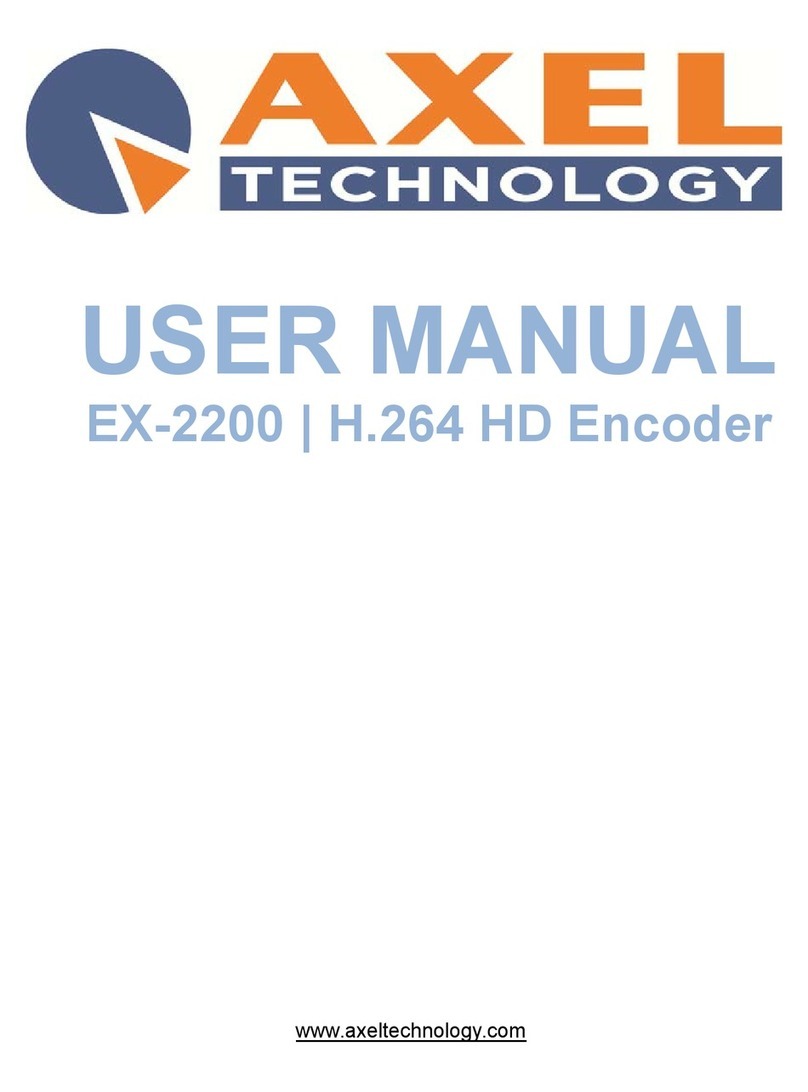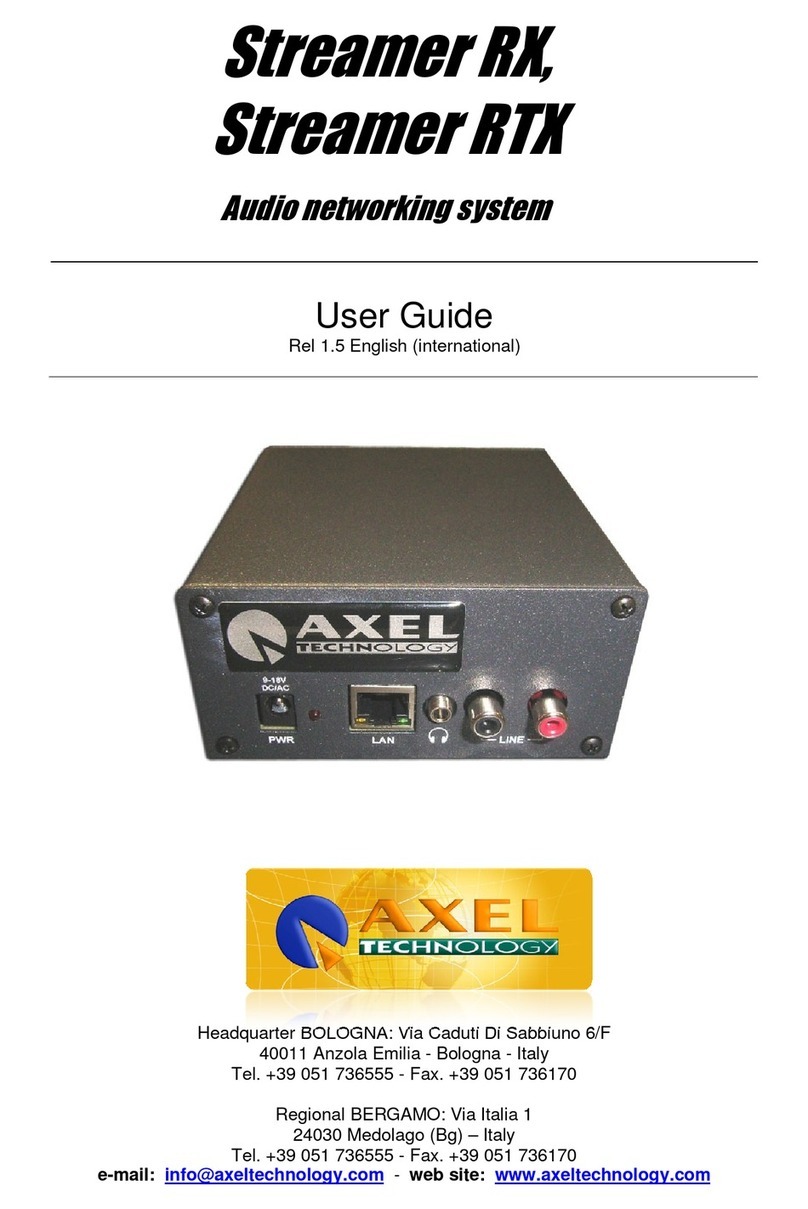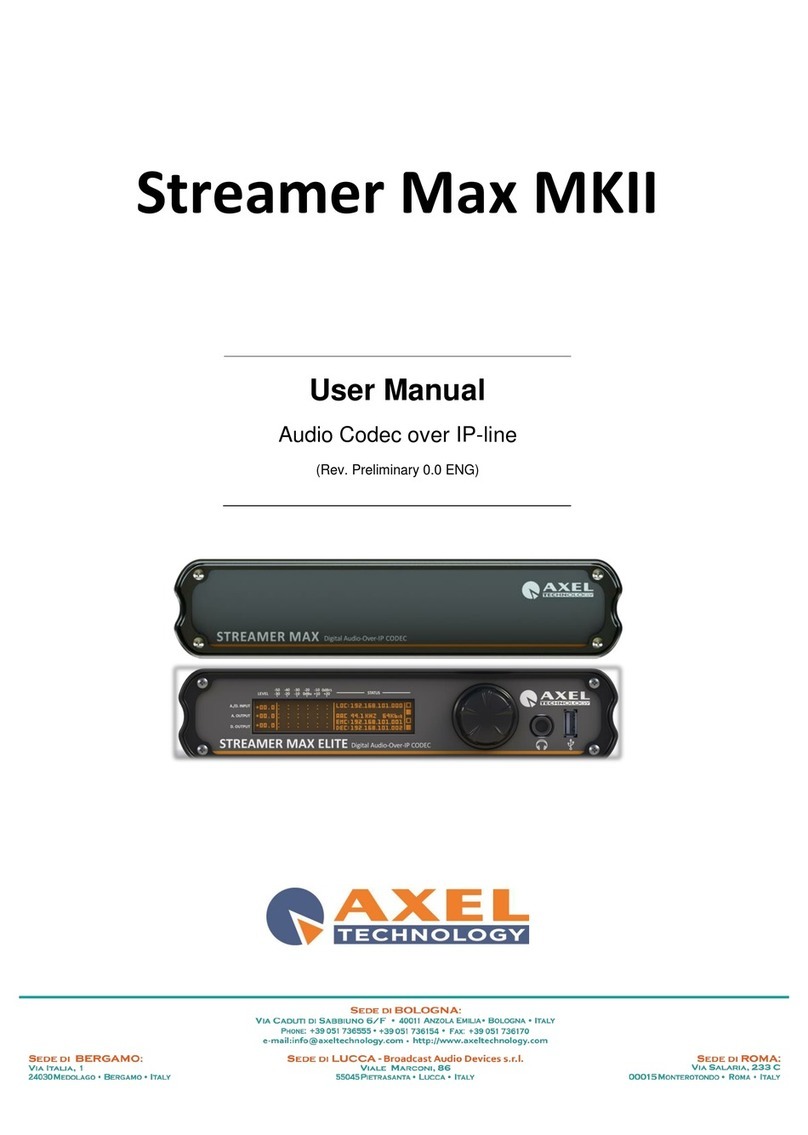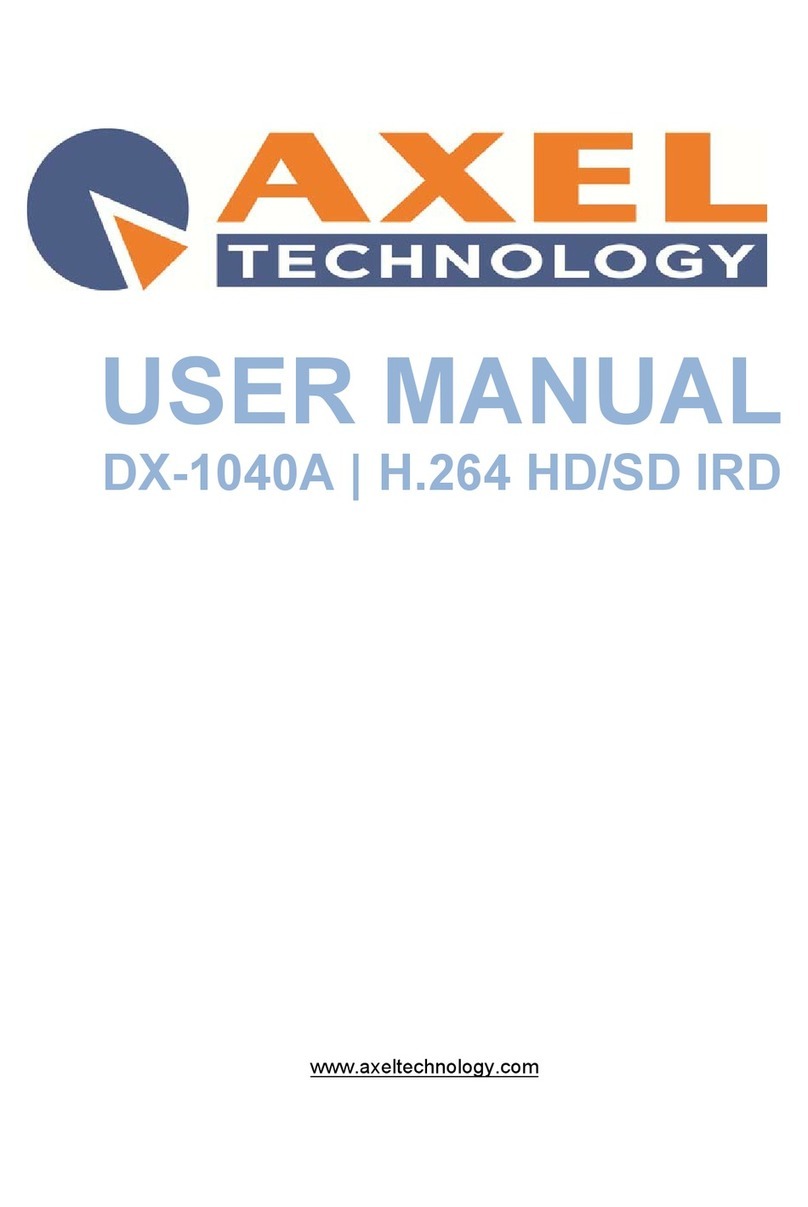SAFETY WARNINGS / ISTRUZIONI PER LA SICUREZZA
23.3 CHANGEOVER STAGE –BLOCK DIAGRAM .............................................................................. 58
23.4 HOW TO SELECT THE INPUT SOURCE..................................................................................... 59
23.5 HOW TOTURN THE AUTOMATIC INPUT CHANGEOVER ON /OFF......................................... 59
23.6 DEFINITION OF CHANGEOVER PARAMETERS AND TERMS .................................................. 60
23.7 AVAILABLE CONTROLS OVER EXTERNAL AUXILIARY MPX................................................... 60
23.8 SUMMARY TABLE FOR CHANGEOVER OPERATION............................................................... 61
23.9 HOW TO KNOW WHICH INPUT SOURCE IS CURRENTLY ON-AIR .......................................... 65
24 STEREO GENERATOR –LEVEL AND WORKING MODES .............................................................. 66
24.1 INPUT AUDIO LEVEL CONTROL................................................................................................. 66
24.2 SETTING THE OUTPUT PRE-EMPHASIS................................................................................... 66
24.3 SUMMARY OF AVAILABLE AUDIOWORKING MODES ............................................................. 67
24.3.1 INTRODUCTION ....................................................................................................................... 67
24.4 HOW TO ADJUST THE INPUT GAIN ON MANUALWORK MODES............................................ 68
24.4.1 LINEAR MODE .......................................................................................................................... 69
24.4.2 LINEAR –FULL RANGE ........................................................................................................... 70
24.4.3 CLIPPER MODE........................................................................................................................ 71
24.5 AGC STAGE -SETTINGS AND OPERATIONS........................................................................... 73
24.6 STEREO ENHANCER CONFIGURATION.................................................................................... 73
25 STEREO GENERATOR - LIMITER STAGE CONFIGURATION ........................................................ 74
25.1 INTRODUCTION........................................................................................................................... 74
25.2 OPERATING MODES ................................................................................................................... 75
26 STEREO GENERATOR - MPX OUTPUT SIGNAL ............................................................................. 76
26.1 CONFIGURATION OF THE OUTPUT: NORMAL, PEAK TONE................................................... 76
26.2 PILOT PHASE AND LEVEL +MPX SIGNAL LEVEL..................................................................... 76
26.3 MPX SIGNAL CALIBRATION –THE POST CLIPPER GAIN ........................................................ 77
27 RDS / RBDS GENERATOR –GENERAL SETUP .............................................................................. 78
27.1 BLOCK DIAGRAM –RDS /RBDS VERSION ONLY..................................................................... 79
27.2 GENERAL RDS/RBDS ENABLING............................................................................................... 79
27.3 RDS PHASE AND LEVEL ADJUSTEMENT.................................................................................. 80
27.4 RDS SYNC SOURCE (RDS VERSION ONLY) ............................................................................. 80
27.5 UECP OR NOT-UECP PROGRAMMING MODE.......................................................................... 81
27.6 CHARACTER TABLES (FOR RT, PS, PTYN SERVICES)............................................................ 81
28 THE ‘STATIC’ RDS / RBDS................................................................................................................. 82
28.1 SYNCHRONIZE INTERNAL CLOCK AND ENABLE ‘CT’ SERVICE............................................. 82
29 DATASET 1 CONFIGURATION .......................................................................................................... 83
29.1 INTRODUCTION........................................................................................................................... 83
29.2 RDS GROUP CONFIGURATION (‘SERVICES’PANEL).................................................................. 83
29.3 EON /PSN SERVICES IN THE DATASET 1................................................................................. 84
29.4 THE PI CODE (PROGRAM IDENTIFIER)..................................................................................... 85
29.4.1 THE ‘PROGRAM IDENTIFIER’ CODE IN THE RDS MODE..................................................... 85
29.4.2 THE ‘PROGRAM IDENTIFIER’ CODE IN THE RBDS MODE .................................................. 85
29.5 THE DI (DECODER IDENTIFICATION) ........................................................................................ 86
29.6 ‘LINKAGE’ INFORMATION (LA, EG, ILS, LSN)............................................................................. 86
29.7 TP, TA, MS CONFIGURATION &THEIR REMOTE CONTROL.................................................... 86
29.8 SLOW LABELING CODES............................................................................................................ 87
29.9 ALTERNATIVE FREQUENCIES (AF) ........................................................................................... 88
29.10 HOW TO COMPOSE AF LISTS..................................................................................................... 89
29.11 AF METHODS AAND B ................................................................................................................ 91
29.12 RADIOTEXT PANEL ..................................................................................................................... 93
29.13 PIN –PTY SERVICES................................................................................................................... 94
29.14PROGRAM SERVICE NAME (PSN) ............................................................................................. 96
29.15 VARIABLE PS -BASIC OPERATION............................................................................................ 97
29.15.1 PS SEQUENCES................................................................................................................... 97
29.15.2 PS SCROLLING..................................................................................................................... 98
29.16 THE SCHEDULER ........................................................................................................................ 99
29.16.1 GETTING STARTED............................................................................................................ 101
29.16.2 SELECTING AN ITEM TYPE............................................................................................... 101
29.16.3 SELECTING THE ITEM NUMBER ...................................................................................... 101
29.16.4 SETUP THE SCHEDULE TIME AND DATES ..................................................................... 102
29.16.5 ENABLING AN EVENT ........................................................................................................ 104































